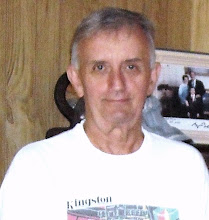COLUMBUS, OH – John O. Meekins has come out of retirement to
help companies “fracking” to develop oil and gas resources in the Utica and
Marcellus Shale gain and keep the important support of local officials and
citizens.
Meekins,
a newspaper reporter and then a public relations professional for many years,
said he came out of retirement because he believes a lot of those companies
need his skills to achieve those two important goals in the communities where they
work.
“I say that because there is an
awful lot of what I call ‘fakelore’ floating around about fracking, the process
many of these companies use to extract oil and gas,” Meekins said. “Fakelore” or
misleading and even untrue information about fracking can raise concerns with
local officials and citizens. “That can lead to unnecessary laws and rules that
benefit no one.”
A number of concerns over
“fracking” raised by federal and state agencies have been addressed to assure
the process is safe. In fact, one independent academic study found that only
the actual drilling to reach oil and gas resources in a few instances caused
problems, not the actual “fracking.” Hydraulic “fracking” incidentally, breaks
up formations deep underground to free trapped oil and gas.
Meekins will work with companies
developing these important resources to make sure they regularly provide
correct information to local governments and citizens on what they are doing.
“This
will be information on each well to include steps taken to meet all environmental
and safety concerns, the number of jobs created and the revenue poured into
each community,” Meekins said. “These companies also need to let local governments
and citizens know the taxes they pay to federal, state and local governments
and especially to the support of schools.”
Meekins
predicted local officials and citizens will really support these companies once
they understand the real value they bring to their communities.
“Development
of these oil and gas resources is important because it promises to change the ‘rust
belt’ image that has depressed Ohio for so long to one of hope and prosperity,”
Meekins concluded.
-
30 -
More information on Meekins and his company,
FracOhio, can be found at: fracohio.com
FracOhio - Helping develop Ohio’s Marcellus and Utica Shale oil and gas resources















